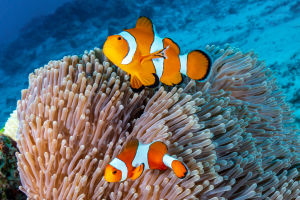Have you ever wondered how whales, those majestic giants of the ocean, communicate and maintain social bonds over vast distances?
Today, we'll dive into the fascinating social structures of whales and explore how they use sound—sometimes traveling hundreds of miles underwater—to connect with each other.
Together, we'll discover the remarkable ways whales build relationships and cooperate in their underwater world.
Complex Social Structures Among Whales
Whales exhibit a wide range of social organizations, from the tight-knit pods of killer whales to the more fluid groups of humpbacks. In species like killer whales, social bonds are strong and often matrilineal, meaning family groups are led by females and last for many years.
Mothers stay close to their calves, guiding and protecting them, while other pod members cooperate in hunting and socializing.
Humpback whales, although often more solitary, form temporary groups during feeding or migration, showing cooperation such as bubble net feeding. These social interactions, whether long-term or temporary, help whales survive and thrive in changing ocean environments.
Whale Communication: The Power of Sound
Sound travels faster and farther in water than in air, making it the perfect medium for whale communication. Whales produce a variety of vocalizations—from clicks and whistles to complex songs—that serve different purposes.
Toothed whales, like physeter whales and dolphins, use echolocation clicks to navigate and hunt, while baleen whales, such as humpbacks, are famous for their long, melodic songs.
These sounds help whales maintain contact with family members, coordinate group activities, find mates, and even warn of dangers. Some low-frequency calls can travel across entire ocean basins, allowing whales to communicate over incredible distances.
Social Bonds Through Sound and Behavior
Whales don't rely solely on sound; they also use physical behaviors like breaching, tail slapping, and jaw clapping to send messages. These visual and acoustic signals can indicate excitement, aggression, or the presence of food. Physical contact, such as rubbing or gentle touching, strengthens social bonds within pods.
Recent drone studies reveal that whales choose specific individuals to interact with more frequently, forming "friendships" and social networks that influence their behavior and survival. Younger whales and females often play central roles in these social groups.
Why Understanding Whale Social Life Matters
Studying whale social structures and communication helps us understand their needs and vulnerabilities. Social bonds influence migration routes, feeding strategies, and reproduction. Disruptions from noise pollution, climate change, or human activity can interfere with whale communication, threatening their survival.
Experts emphasize that protecting whale habitats and reducing ocean noise are crucial steps to preserve these intelligent, social creatures. Conservation efforts that consider social behavior lead to better outcomes for whale populations worldwide.
Let's Celebrate and Protect Our Whale Neighbors
Have you ever been moved by the haunting songs of whales or fascinated by their social behavior? We invite you to share your experiences and questions about these incredible animals.
Together, by learning and caring, we support the preservation of whale societies and their amazing ways of connecting through sound. Thank you for joining us in exploring the rich social world of whales!


